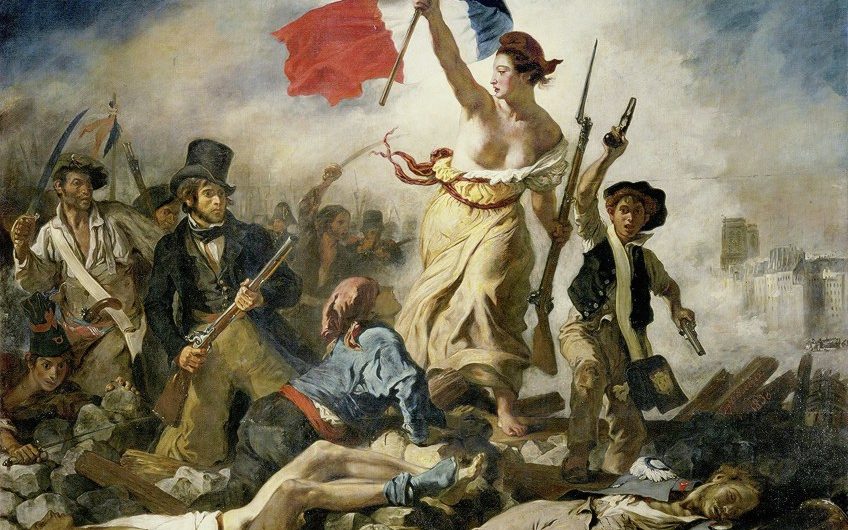Vaishnavi Srivastava
26th April, ON THIS DAY
“The only way to be a true artist is to work incessantly; to be utterly devoted to your art and to your ideal.”
– Eugene Delacroix
Today, April 26, we celebrate the birth of one of the most influential artists of the 19th century- Eugene Delacroix. The remarkable artist transformed the field of painting in the 19th century. Future generations of painters were inspired by his revolutionary techniques and audacious use of colour, which infused the art world with a fresh sense of emotion and vitality. Delacroix has left behind a legacy that has lasted for more than a century, and his works continue to enthral audiences with their beauty and strength.
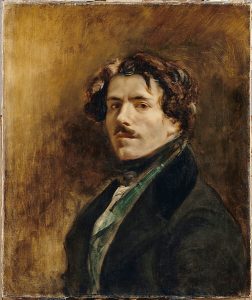
Courtesy: Met
Delacroix was born in France in 1798, and even as a young child, he showed artistic skill. He studied under some of the most well-known artists of the day, including Theodore Gericault and Pierre-Narcisse Guerin. The Romantic movement, which was characterised by a stress on emotion, individualism, and nature, had a significant influence on Delacroix’s early works.
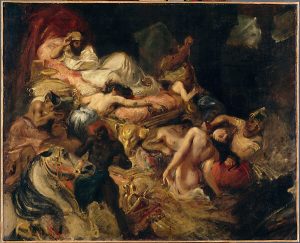
Courtesy: Met
“Liberty Leading the People,” (as shown in the featured image) is one of Delacroix’s most well-known pieces, wonderfully encapsulates the ideals of the Romantic movement. In the picture, a lady personifying Liberty is seen leading the Parisians’ 1830 uprising against the king. The viewer is transported to the scene and given a sense of urgency and intensity through the use of vibrant colours and bold brushstrokes.
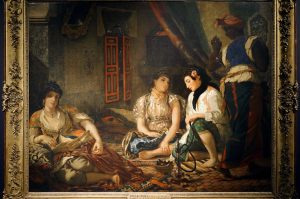
Courtesy: Smarthistory
Colour was used in a particularly creative and risky way by Delacroix. He wasn’t afraid to utilise obnoxious, brilliant colours that were unorthodox at the time. This method may be seen in many of his works, including “The Death of Sardanapalus” and “The Women of Algiers in Their Apartment.” Rich, deep reds and purples by Delacroix are used to depict the extravagance and luxury of the setting in “The Death of Sardanapalus.” In “The Women of Algiers in Their Apartment,” he employs vivid blues and greens to evoke a sense of serenity and tranquilly.
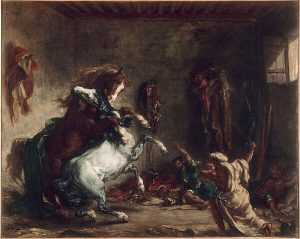
Courtesy: Met
Delacroix shared the Romantic artists’ enthusiasm in capturing exotic and other civilizations in his works. He took many trips throughout his life, stopping in Spain, Italy, and North Africa. His travels served as the inspiration for a number of his pieces, including “Arab Horses Fighting in a Stable” and “Fanatics of Tangier.” Delacroix aimed to convey the beauty and liveliness of the civilizations he encountered in these works.
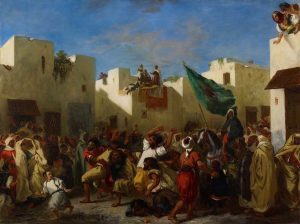
Courtesy: Google Arts & Culture
Delacroix had detractors despite his popularity. Some claimed that his use of colour and subject matter was too outrageous, at times bordering on the vulgar. It is impossible to dispute his impact on the art world, nevertheless. He prepared the stage for the Impressionist movement to develop later in the century with his use of colour and passion.
Finally, Eugene Delacroix was a real innovator in the field of art. He produced a body of work that is still admired and researched today. His unconventional methods and audacious use of colour defied convention and opened the door for later generations of painters. His legacy continues to enthral and inspire people today, demonstrating the enduring value of art.

